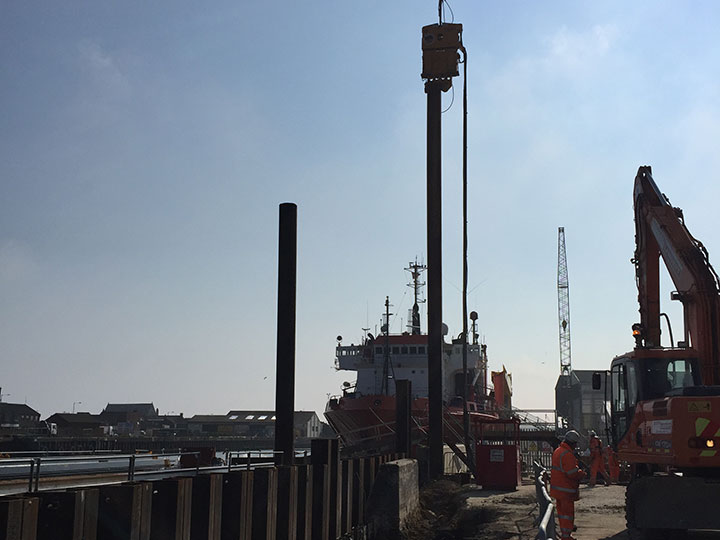
Great Yarmouth
LOCATION: Great Yarmouth
PROJECT TYPE: Ground investigation - flood defences
VALUE: £140K
BACKGROUND
Great Yarmouth has a history of devastating floods, with major events in 1953 and most recently in 2013. Flood defences have been upgraded on a number of occasions, with the most recent scheme completed in early 2016.
This £28.6M Environment Agency project aimed to protect more than 2,000 homes and businesses, upgrading sea defences in Great Yarmouth harbour by refurbishing and raising quay walls along the River Yare. Harrison Group Environmental, working for contractor BAM Nuttall, carried out the ground investigation for design of new sheet pile walls and 94 permanent Single Bore Multiple Anchor (SBMA) ground anchors (installed by Keller Geotechnique) to support raised quay walls.
Ground conditions comprised 20m of unconsolidated made ground, deep organic soils and very soft clay over medium dense to dense sand. The SBMA anchors were some of the longest ever installed in the UK, at up to 62m long, allowing them to be founded in the sand, as the soft material above could not provide sufficient bonding capacity.
Harrison Group used its extensive experience of working in Great Yarmouth’s challenging ground conditions, to design an investigation that would gather the high quality data essential to ensure the anchors could meet the high axial loads required to support the quay walls.
SCOPE OF WORK
The ground investigation began in 2014 and comprised 16no., 40m deep, cable percussive boreholes to provide data for the anchor and sheet pile wall design. Harrison Group also carried out plate bearing tests and a Ground Penetrating Radar (GPR) survey to confirm the ground could support loads from heavy construction plant. Shear vane tests and piston sampling were carried out in the boreholes to depths of 21m, along with standard SPTs and sampling to 40m. Geotechnical testing was carried out by Harrison Group’s in-house laboratory in Norwich.
The site has a long industrial history, so stringent environmental protection was put in place during the investigation. This meant that drilling had to be ‘clean’, with environmental seals used between drill strings to prevent cross-contamination between strata. Work was carried out in bunded areas with borehole arisings and groundwater stored and tested before being sent for disposal off-site.
The GPR survey was used to identify any shallow voids beneath the quayside that could present a hazard to machinery tracking over the area during construction. Plate Bearing Testing confirmed appropriate CBR values had been achieved by the compaction of loose and soft quayside material before construction began.
OUTCOME
The ground investigation was completed safely, within the programme and to budget, to the satisfaction of the client. In recognition of the professionalism of their work on site and follow-on reporting, the client commented.
“Harrison’s expertise, combined with its experience of Great Yarmouth’s challenging ground conditions, ensured the investigation delivered the best possible data for the design of both the temporary and permanent works.”







